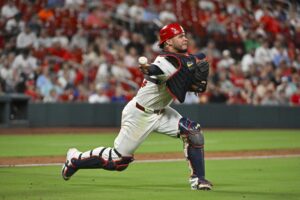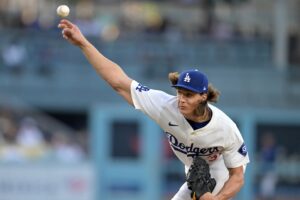The Boston Red Sox began their inevitable trade deadline fire sale on Friday, trading relievers Brandon Workman and Heath Hembree to the Philadelphia Phillies in exchange for right-hander Nick Pivetta and Connor Seabold. Pivetta has been in the majors since 2017 and doesn’t have much projection left. Seabold, however, has never pitched above the AA level and should add depth to a farm system lacking MLB-caliber arms. Let’s take a look at what the 24-year old does well, and what needs to improve for him to make it at the major league level.
Connor Seabold Scouting Report
Seabold initially entered the world of professional baseball as a third-round pick in the 2017 June Amateur Draft. Selected by the Philadelphia Phillies, Seabold gradually made his way through the minors while improving his stock as a prospect. Entering 2020, the righty had a career 3.52 ERA and 3.39 FIP in 196.2 innings of minor league ball. It’s worth noting that he has improved with time, as he recorded a 2.25 ERA and a 2.77 FIP in 40 Double-A innings last year.
The first thing that jumps out about Seabold’s stat line is his control. Seabold owns a career 5.8% walk rate and averages 2.11 walks per nine innings. This is great news for the Red Sox, as walks have been an issue with some of their most recent prospects. He also knows how to get guys out by way of the K, striking out 9.29 batters per nine innings.
Of course, stats can only tell you so much about a prospect. Seabold entered the season as the 30th-best prospect in Philadelphia’s system, according to MLB.com. MLB.com goes on to note that he’s a well-rounded pitcher, earning 50 grades for his fastball, curveball, and changeup. For those uninitiated, a 50 is considered average in MLB scouting circles.
What to Improve
Seabold offers some interesting long-term upside, but there’s a reason the Red Sox were able to get him in exchange for two minor leaguers in a shortened season. As mentioned by his scouting grades, he doesn’t offer elite upside with any one of his pitches. While he’s not bad at anything, he doesn’t have a signature pitch.
Interestingly enough, Fangraphs is actually lower on Seabold than MLB.com. By their scouting, Seabold has a 40 fastball, 50 curveball, and 40 changeup. Ian Cundall of Sox Prospects, meanwhile, seems to think that Seabold’s best pitch is his changeup. No matter who you believe, general consensus seems to be that Seabold has three decent pitches, but lacks an elite offering.
This lack of a signature pitch is going to limit Seabold’s overall ceiling. He has a three-pitch mix, so there is a chance that he could last in the majors as a starter. However, his best-case scenario is probably being the fourth or fifth arm in the rotation. Fortunately, his above-average control combined with having three solid pitches means that he should develop into a solid bullpen arm and spot starter, if nothing else.
Main photo:
Embed from Getty Images






